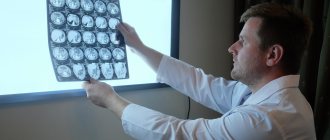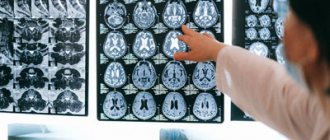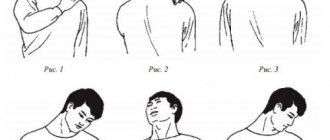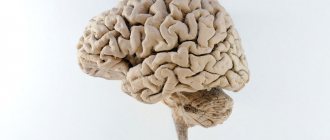01.12.2018
28. Oka Y. Thirst driving and suppressing signals encoded by distinct neural populations in the brain.
29. Saker P. Regional brain responses associated with drinking water during thirst and after its satiation.
30. Dohi K. Molecular hydrogen in drinking water protects against neurodegenerative changes induced by traumatic brain injury.
31. Meinders A. How much water do we really need to drink?
32. Jéquier E. Water as an essential nutrient: the physiological basis of hydration.
33. Aguado E. Hypodynamia Alters Bone Quality and Trabecular Microarchitecture.
34. Mukhamedieva L. Human's breath during modeled prolonged hypodynamia.
35. Ye F. A systematic review of mobility/immobility in thromboembolism risk assessment models for hospitalized patients.
36. Boraxbekk C. Physical activity over a decade modifies age-related decline in perfusion, gray matter volume, and functional connectivity of the posterior default-mode network-A multimodal approach.
37. Kemi O. High-intensity aerobic exercise training improves the heart in health and disease.
38. Hautala A. Heart rate dynamics after controlled training followed by a home-based exercise program.
39. Treatment exercises for the spine with osteochondrosis.
40. Osteochondrosis of the cervical spine, special exercises from Dr. Butrimov
‘>
Causes of cerebral circulatory disorders
The brain is the main organ of the central nervous system; it consists of neurons united by synaptic connections. By interacting with each other, neurons form chains of electrical impulses that regulate the activity of the body1.
The functioning of the brain requires large amounts of energy, which it receives through the bloodstream. Blood enters the brain through four arteries - two carotid and two vertebral, and outflow - through two jugular veins. With an average weight of 2% of the total body weight, the brain at rest consumes 15% of all blood circulating in the body, 20-25% of the oxygen received during respiration, and up to 50% of all glucose reserves entering the blood from the liver2.
Blood supply to the brain and blood circulation within the organ play a crucial role in its functioning, since without the provision and distribution of energy, oxygen, vitamins and amino acids entering the bloodstream, neurons cannot grow and divide. 85% of all pathologies associated with brain function are due to circulatory disorders3. Improving blood circulation in the brain is necessary for any pathologies and conditions that can lead to vasoconstriction or impaired blood circulation within the organ.
Pathological causes of vasoconstriction and their consequences:
- Arterial hypertension. In response to increased blood pressure, the walls of blood vessels spasm, and additional layers grow on the inside of the vessels. Thickening impairs blood flow4,5,6.
– Hypercholesterolemia. Violation of lipid metabolism in the direction of increasing low-density lipoproteins (“bad cholesterol”) leads to the formation of atherosclerotic plaques on the walls of blood vessels. Plaques completely or partially block a vessel, disrupting blood circulation, including in the brain7.
– Thrombosis. The formation of a thrombus (a clot of coagulated blood) can have various origins, as a rule, these are damage and cracks in the walls of blood vessels. Blood clots lead to blockage of blood vessels and increase blood viscosity, impairing blood circulation to the brain8,9.
- Diabetes. With increased levels of glucose in the blood, thickening of the vascular walls is stimulated, which leads to disruption of the natural flow of blood, and blood supply to the brain is disrupted10,11.
– Osteochondrosis of intervertebral discs. The vertebral artery is one of the main vessels through which blood flows to the brain. With pathology of cartilage tissue, intervertebral discs compress this artery, disrupting the blood supply to the brain12,13.
- Cardiopsychoneurosis. This is a complex of disorders of the cardiovascular system that can lead to disturbances in blood supply and circulation in various organs, including the brain14,15.
Impaired blood circulation in the brain can result from traumatic brain injuries, including concussions and bruises, as well as traumatic injuries to the spine, accompanied by impaired blood flow.
Neurocirculatory dystonia in the context of cerebral circulatory disorders is considered separately. The difficulty is that this disease often does not have an acute phase, and its main symptoms without targeted diagnosis can be explained by a number of typical pathologies such as chronic fatigue syndrome16. In other words, many simply do not know that they have this disease (sometimes called a syndrome in the medical literature).
Symptoms of neurocirculatory dystonia are nervousness, increased fatigue, sleep disturbances, weakness, impaired cognitive function, and subsequently palpitations, cardialgia, shortness of breath, and blood pressure disorders. In the future, it leads to arrhythmia, tachycardia, and chronic vascular insufficiency. All these symptoms are explained, among other things, by impaired blood circulation in the brain17.
Reasons for the development of neurocirculatory dystonia18:
– genetic predisposition;
– psycho-emotional stress;
– lack of sleep (inconsistency with circadian rhythms);
– lack of physical activity;
– unbalanced diet, obesity;
– alcohol abuse, smoking.
That is, lifestyle directly affects the development of neurocirculatory dystonia, which leads to chronic cerebral circulatory disorders. Under conditions of lack of oxygen and nutrients, the rate of formation of neurons decreases, connections between control departments, as well as the transmission and inhibition of nerve impulses within the central nervous system are disrupted.
As a result, memory, concentration, reaction and coordination of movements deteriorate, constant fatigue and drowsiness are observed, and performance drops to 50%19. This condition can lead to massive death of brain cells and the appearance of local foci of necrosis. That’s why improving blood circulation in the brain is vitally important; let’s look at how to do it point by point.
Why is proper blood circulation so important?
The brain is the most important organ for blood supply. Although it is only 2% of body weight, it consumes 50% of the glucose and 20% of the oxygen available in the body. Blood also removes waste. The lack of oxygen will begin to kill nerve cells within minutes.
However, in most cases when we stand upright, the brain is the tallest part of the body with the smallest blood vessels, furthest from the heart. This makes it difficult for blood to get to the brain.
Too little blood circulation results in a lack of glucose and oxygen needed to maintain the metabolic activity of neurons, a condition known as ischemia. Too much blood flow leads to increased intracranial pressure, which in extreme cases leads to serious neurological damage.
Therefore, the body has several control and balance systems to ensure that the brain receives sufficient blood and oxygen.
Adults with normal blood pressure receive between 50 ml of blood and 100 g of brain tissue per minute, which supplies oxygen to the brain at a pressure of 60 to 160 mmHg.
If the oxygen supply goes beyond this range, the brain loses its ability to maintain constant blood flow. Therefore, blood flow strictly depends on the pressure in the arteries (mean arterial pressure). [, , ]
We improve blood circulation in the brain - sufficient and complete sleep
According to research, the duration of proper sleep is 7-8 hours per day20. Sleep should be regular - that is, it is recommended to fall asleep and wake up at approximately the same time. It is necessary to sleep in absolute darkness and silence, so the brain can fully analyze and systematize the information received during the day, as well as update the neurochemical mechanisms responsible for long-term memory21.
Research shows that adequate sleep normalizes blood circulation in the brain, ensuring adequate daily intake of oxygen and nutrients by brain cells. Lack of sleep, on the contrary, impairs blood supply to the brain and blood circulation, leads to the death of neurons and extensive damage to the central nervous system (including disruption of the function of the blood-brain barrier, which protects the brain from infections and toxins that can enter it through the blood)22,23. Therefore, in order to improve blood circulation in the brain, you must first normalize sleep; without this measure, other methods will be less effective.
Piracetam and other nootropics
Most often, at an appointment with a neurologist, adults who complain of memory impairment are recommended to take nootropics. This group includes drugs that improve cerebral circulation and memory, acting through a special mechanism. They affect the nervous system in different ways:
- change the rate of neuron excitation;
- optimize metabolic processes;
- increase blood microcirculation;
- improve blood quality;
- improve communication between the cerebral hemispheres.
Nootropics significantly increase the speed of thinking, memory, mental performance, increase concentration, and improve cognitive processes. During a course of treatment, cells that were damaged during the action of negative factors - external and internal - are also restored.
There are many memory-optimizing pills on the market from the group of nootropics. List of the best drugs:
| A drug | Active substance | Price |
| Piracetam | Piracetam | 30 |
| Lutsetam | Piracetam | 75 |
| Nootropil | Piracetam | 350 |
| Fenotropil | Phenylpiracetam | 1100 |
| Noopet | Noopet | 520 |
| Fezam | Piracetam, cinnarizine | 400 |
Nootropics are neutral to the bioelectrical activity of the brain; they do not affect autonomic functions, reflexes, or human movements. The drugs are useful even for children, especially schoolchildren, as well as students during periods of increased mental stress.
Cerebral circulation can be impaired for various reasons at any age. To improve vascular health, special drugs are always prescribed that dilate arteries and capillaries, strengthen their walls and eliminate spasms. Read more in the article: “new generation vascular drugs for the brain.”
With asthenia and lethargy, nootropics reduce pathological phenomena. The course of administration has an antidepressant effect and helps improve sleep. Nootropics also have antiparkinsonian and antiepileptic effects.
Advertising:
Improving blood circulation in the brain - diet and drinking regimen
A diet to improve blood circulation in the brain is selected based on the metabolic characteristics and condition of a particular person. Before adjusting the diet, it is recommended to conduct the following studies: daily blood pressure monitoring, blood tests for glucose and cholesterol, and a coagulogram. Based on research results, it is necessary to adjust the amount of salt, sugar, animal fat and other products in the diet24,25,26.
Diet recommendations to improve blood circulation in the brain:
– The consumption of salted, smoked and canned foods is usually limited in the presence of arterial hypertension, based on the recommendation - no more than 4.5 grams of salt per day.
– Restrictions on the amount of animal fat (fatty meat, lard, milk, butter) are determined by the presence of hypercholesterolemia, which sets the upper limit - 1 gram of fat per 1 kg of weight.
– The amount of monosaccharides and disaccharides (glucose, sucrose and foods high in them) is limited when blood glucose is high. In this case, preference is given to polysaccharides, which are found, for example, in durum cereals and pasta.
– Since vitamin K actively stimulates blood clotting, if this indicator increases, it is recommended to limit all foods high in vitamin K (white cabbage, broccoli, spinach, lettuce, soy, eggs, dairy products, green tea).
Research shows27 that foods high in sodium reduce central perfusion pressure, which measures the level of blood flow to the brain. In this regard, outside of pathologies, it is recommended to avoid excessive consumption of foods high in sodium - salt, herring, caviar, almost all cheeses, beef kidneys, feta cheese, dry cream, powdered eggs.
Products to improve blood circulation in the brain:
– amino acids of animal and plant origin (meat, legumes);
– seafood (mussels, shrimp) and sea fish (mackerel);
– vegetables and fruits high in vitamin C and group B;
– cereals, nuts, berries and citrus fruits (rich in bioflavonoids).
Drinking regime
– a separate item in the program for improving blood circulation in the brain. Research shows that sufficient water consumption (2.5 liters per day in the absence of additional instructions due to pathologies) is the prevention of blood clots. However, in case of pathologies, it is still necessary to use antiplatelet agents or anticoagulants prescribed by a doctor.
Thirst quenching is also necessary for the development of neural populations28,29. The latest research shows that molecular hydrogen in drinking water protects the brain from neurodegenerative changes of various origins, including those caused by traumatic brain injury30. Therefore, to improve blood supply to the brain, it is necessary to drink enough water, and the drinking regime should be regular - the recommended 2.5 liters must be evenly distributed throughout the entire waking period.
Please note that 2.5 liters is an average. According to research, women on average need to drink less water than men (2.2 liters and 3 liters per day, respectively)31. Also, the recommended daily amount of water is determined by weight, age and lifestyle32. Below is a table of recommended daily water intake.
Improving blood circulation in the brain - physical activity and exercise
Physical inactivity (lack of physical activity) can be caused by many factors - from sedentary work to basic laziness. It has a number of negative consequences, including problems with the cardiovascular and respiratory systems, bones33,34.
In the context of cerebral circulation, lack of physical activity is associated with an increased risk of blood clots35 and deterioration of the conductive capacity of gray matter (a major component of the central nervous system)36. Therefore, anyone who leads a sedentary lifestyle is recommended to take regular walks, run every night, practice Nordic walking, or workout in the gym.
Research shows that regular physical exercise has a beneficial effect on blood flow throughout the body, including the brain37,38. There are special sets of exercises to improve blood circulation in the brain, and there are also specialized programs implemented in the presence of certain pathologies.
A set of exercises to improve blood circulation in the brain:
– Take a sitting position, looking straight ahead, turn your head 45 degrees to one side, then to the other.
– Slowly rotate your head in a circle, first to the right, then to the left.
– Tilt your head up so that your chin points to the ceiling. Then lower your head to your chest and touch your chin to your chest.
– Bend to the right and left towards your shoulders so that your ear touches your shoulder. The shoulders are motionless.
– Looking straight ahead, stretch your head forward as much as possible, return it to its original position and pull it back as far as possible.
The entire complex is performed as slowly and carefully as possible. The purpose of exercises to improve blood circulation in the brain is to relax the muscles that compress the blood vessels and normalize blood flow. Each movement is performed 10-15 times; for sedentary work, it is recommended to perform the complex 2-3 times during the day at approximately equal intervals.
Exercises to improve blood circulation in the brain with cervical osteochondrosis include neck rotations, lateral flexions, rotation, retractions, and stretching of the trapezius muscle. The figure below shows an example of such a complex.
There are many specialized complexes of medical gymnastics to improve blood circulation in the brain in case of osteochondrosis of various joints39,40. It is unacceptable to perform these exercises on your own; they are performed only under the supervision of a specialist, or as directed and after consulting a doctor.
Content:
- Why is it necessary to restore strength and energy after Covid?
- What to take after coronavirus: how to choose the right rehabilitation program 2.1. Restoring strength and energy after Covid: main directions of rehabilitation 2.2. Indications for immediate medical attention
- Non-drug methods of recovery after coronavirus infection
- What to drink after coronavirus for recovery
Despite numerous clinical studies, doctors still cannot say about the long-term consequences of COVID-19. But today it has been established that even with a mild course, coronavirus can lead to chronic pathologies of almost all internal organs and the nervous system. Doctors are convinced that rehabilitation (ideally if it takes place on the basis of a specialized medical center) is needed by all patients without exception. The problem of how to restore strength and energy after Covid requires special attention, because more than 90% of those who have recovered complain of weakness. Typically, such a symptom appears due to severe intoxication, but in some cases this may indicate the development of more serious and dangerous complications.
Improving blood circulation in the brain - bioactive supplements
Most dietary supplements for improving brain circulation are nootropics, the mechanism of action of which is related to stimulating blood flow. One of the popular nootropics with this mechanism of action is glycine. This is an aliphatic amino acid that functions as a neurotransmitter and has an “inhibitory” effect on neurons, which gives a mild sedative effect.
Glycine reduces the release of GABA and glutamic acid and stimulates blood circulation in the brain. Target effects – relieves irritability and aggressiveness, eliminates chronic fatigue syndrome, improves brain function, stimulating cognitive functions (memory, reaction, attention).
Among nootropics there are not only amino acids, but also extracts, for example, ginkgo biloba extract. It contains 24% flavonoids, vitamins, minerals and other bioactive substances. It has a vasodilating effect, improves blood flow to the brain and blood flow inside the organ. It also stabilizes blood pressure and cholesterol levels, improves microcirculation. Helps eliminate neurocirculatory dystonia and chronic fatigue syndrome caused by psycho-emotional stress.
Complex supplements, such as “Healthy Sleep,” will help improve blood circulation in the brain, eliminate anxiety and normalize sleep. This supplement includes glycine, gamma-aminobutyric acid, tryptophan, melatonin and 4 extracts - lemon balm, passionflower, valerian and chamomile. The benefit of the supplement is that it not only stimulates blood circulation in the brain and improves cognitive function, but also stabilizes the sleep/wake cycle, helping to get enough sleep.
What health problems are associated with poor cerebral circulation?
Brain fog or cognitive impairment
Cerebral circulation is associated with energy production and plays an important role in maintaining cognitive function.
Therefore, increasing blood circulation in certain areas can improve cognitive impairment. Proper blood flow is critical for normal cognitive function. And keeping blood flowing to the brain can slow and even prevent cognitive decline later in life. [, ]
Neurodegenerative diseases
- Parkinson's disease . Patients with Parkinson's disease and dementia experience decreased blood flow in certain areas of the brain compared to controls. []
- Alzheimer's disease . Reduced blood flow to key areas of the brain is one of the early signs of Alzheimer's disease, and therapies that increase blood flow offer benefits to patients. []
Psychoneurological disorders
- Depression . Reduced blood flow in certain areas of the brain has also been noted in patients with late-onset depression. []
- PTSD . Provoking traumatic experiences in PTSD patients results in increased blood flow to the amygdala (an area of the brain associated with fear conditioning) and decreased blood flow in other areas. [, ]
- Anxiety disorders . People with anxiety disorders, OCD, agoraphobia and post-traumatic stress disorder have significantly less cerebral blood flow than healthy people. []
Fatigue
During exercise, breathing more (hyperventilation) reduces the amount of carbon dioxide in the arteries. This restricts blood flow. Decreasing the amount of available oxygen in the brain contributes to the development of fatigue.
Hypoxia causes an increase in nitric oxide and adenosine levels. Which in turn leads to drowsiness.
Brain damage . Lack of oxygen in brain tissue (ischemia) occurs in approximately ~30% of people with traumatic injuries. In addition, the severity of injuries correlates with decreased blood flow. [, , , ]
Improving blood circulation in the brain - vitamins
Among the vitamins for improving blood circulation in the brain, one can highlight Vitamin B5 (pantothenic acid), which is necessary for the functioning of nerve fibers, the division of epithelial cells and the formation of the inner wall of blood vessels. Vitamin B6 (pyridoxine) is involved in the functioning of the nervous system, is necessary for the formation of a number of neurotransmitters, and reduces the level of lipids in the blood. Vitamin B8 (inositol) is part of the protective membrane of brain cells, stabilizes lipid metabolism, and normalizes mood.
Vitamin C (ascorbic acid) normalizes blood clotting, stabilizing blood flow, stabilizes capillary permeability, and is an antioxidant. Also, complexes with minerals - phosphorus, magnesium, selenium and zinc - are useful to improve blood circulation in the brain. All these minerals are necessary to maintain the functioning of brain cells. Examples of such complexes are Magnesium + Vitamin B6, Zinc + Vitamin B6, Multivitamin complex 360.
Cerebrolysin and Vinpocetine
A rather expensive but highly effective remedy for improving memory is Cerebrolysin. Such tablets are not available - the product is presented only in the form of a solution for intravenous administration.
Price for 10 ampoules - 1200 rubles. The active ingredient is a complex of peptides obtained from pig brain tissue. The properties of the drug are unique - its active neuropeptides easily penetrate the natural protective barriers of the brain, rush to neurons and have the following effects:
- increase metabolic rate;
- accelerate protein synthesis in cells (relevant for an aging body);
- protect cells from damage by free radicals;
- reduces the effects of oxygen starvation.
Advertising:
The medicine is indicated for those who suffer from serious disorders of the nervous system, memory impairment, and intellect. More often it is prescribed after a stroke, for dementia, in children - for mental retardation, after head and back injuries, and for depression.
Vinpocetine has a different composition (vinpocetine) and a low price (140 rubles).
These pills for brain activity and memory are prescribed everywhere for various forms of encephalopathies, after a stroke and for other diseases that have led to cognitive disorders. Vinpocetine, unlike Cerebrolysin, should not be taken before the age of 18.









